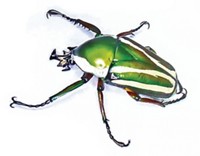Advertisement
Grab your lab coat. Let's get started
Welcome!
Welcome!
Create an account below to get 6 C&EN articles per month, receive newsletters and more - all free.
It seems this is your first time logging in online. Please enter the following information to continue.
As an ACS member you automatically get access to this site. All we need is few more details to create your reading experience.
Not you? Sign in with a different account.
Not you? Sign in with a different account.
ERROR 1
ERROR 1
ERROR 2
ERROR 2
ERROR 2
ERROR 2
ERROR 2
Password and Confirm password must match.
If you have an ACS member number, please enter it here so we can link this account to your membership. (optional)
ERROR 2
ACS values your privacy. By submitting your information, you are gaining access to C&EN and subscribing to our weekly newsletter. We use the information you provide to make your reading experience better, and we will never sell your data to third party members.
Environment
Spider Seduction Requires UV Light
Sex-specific use of UV light to seek out a mate is a first
by Sarah Everts
January 29, 2007
| A version of this story appeared in
Volume 85, Issue 5
When some spiders desire a little romance in their lives, they use ultraviolet light as the aphrodisiac. Biologists in Singapore and England have now added the ornate jumping spider Cosmophasis umbratica to a growing list of critters—including parrots, butterflies, and fish—that rely on UV reflection and fluorescence to socialize (Science 2007, 315, 481).

What makes these spiders' use of UV light stand out—besides the afterglow—is that UV reflectance and UV-induced fluorescence are employed on a sex-specific basis. Without UV wavelengths, these spiders get no love.
Males reflect UV light off scales on their faces and bodies during the mating game, whereas females have sensory organs called palps, typically used to capture prey, that fluoresce bright green when excited by UV light.
In the absence of UV light, the success rate for consummating courtships decreases, explains senior author Daiqin Li of the National University of Singapore. Although he suspected the jumping spider might use UV reflectance to communicate, the discovery of female fluorescence came as a total surprise.
"The fluorescence really seems absolutely essential for the males to recognize the females," comments Thomas Cronin, who studies fluorescent shrimp at the University of Maryland, Baltimore County. "In most other creatures, fluorescence is a supplementary signal to add contrast. In these spiders, it seems necessary for the male spider to find a female." The proteins responsible for reflecting UV light in the males and triggering UV-induced fluorescence in the females have not yet been identified, but Li's group is looking for them.
Li suggests that the nanostructures the male spiders use to reflect UV light could have many applications, not only in biomedical sciences and ophthalmology but also in automobile and textile industries, energy storage, and laser optics.
As the list of critters that capitalize on UV optics to enhance their communication gets longer, "about the only animal group for which UV seems not so important is mammals, making us the exception," comments Justin Marshall, a biologist at the University of Queensland, in Brisbane, Australia. But humans compensate, he says, with whiter-than-white laundry detergent, bright and bold Post-it notes, and glow-in-the-dark tattoos for nightclubbing.






Join the conversation
Contact the reporter
Submit a Letter to the Editor for publication
Engage with us on Twitter